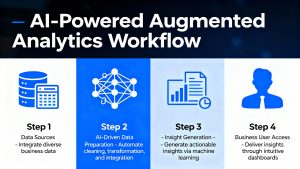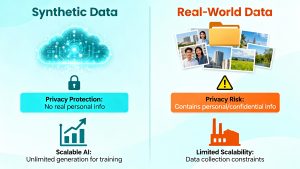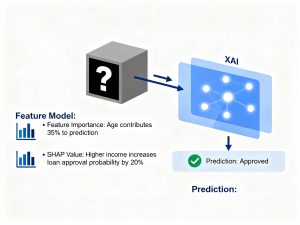Salesforce’s Marketing Intelligence team set out with a clear mission: enable digital marketers to optimize ad spend and maximize revenue by providing unified, actionable insights. The modern marketing landscape is fragmented, with data scattered across platforms like Google Ads, Facebook, Snapchat, and LinkedIn. Each platform uses different reporting formats and analytics, making it difficult for marketers to gain a comprehensive view of campaign performance.
The real challenge extends beyond just handling large volumes or diverse data sources. Marketers need to bridge the gap between raw advertising data and actionable insights that drive real-time decisions. For organizations managing hundreds of campaigns and allocating millions in ad spend, it is essential to quickly identify which strategies are effective and which need adjustment. Marketing Intelligence was designed to close this loop—unifying cross-channel data at scale, leveraging AI to uncover insights, and automating recommendations to optimize campaign performance.
Tackling the Complexity of Cross-Channel Analytics
The Challenge of Scale and Variety
Ingesting, transforming, and harmonizing data from hundreds or even thousands of advertising accounts is a technically complex problem. Data arrives in inconsistent formats, with varying schemas and levels of granularity, and is subject to frequent changes. Large enterprises might connect anywhere from 100 to 2,000 data sources, each with its own quirks.
Traditional data integration methods required weeks or months of custom setup. Salesforce’s new Marketing Intelligence architecture automates this process, abstracting away complex Data Cloud configurations and packaging them into a streamlined, five-minute onboarding flow. Marketers simply select their data sources, and the system automatically provisions the necessary pipelines and schema mappings, making sophisticated analytics accessible to business users, not just technical experts.
Engineering Solutions for Massive Data Unification
Overcoming Fragmentation
Uniting data from hundreds of sources tested every aspect of the technology stack. Previously, implementing such a solution demanded weeks of manual configuration and deep technical expertise to normalize and prepare data for analytics.
Marketing Intelligence introduced Data Pipelines—an automated feature that provisions all necessary Data Cloud components for each source, including data streams, transformations, data lake objects, and semantic mappings. What once took days or weeks now requires just five minutes. The system is designed for linear scalability: every new ad account triggers an automated provisioning template, deploying a complete ingestion pipeline mapped to a standardized data model. Behind the scenes, harmonized schemas support seamless analytics and workflows1.
Close collaboration with the Data Cloud team enabled the development of incremental transforms, a feature critical for efficient daily data processing and cost control.
Modernizing with Salesforce-Native Technologies
Replatforming for Agility and Scale
Transitioning to modern Salesforce technologies involved more than integration—it required a full replatforming. The legacy system was dismantled and rebuilt using Data Cloud for ingestion and transformation, AgentForce for automation, Tableau for analytics, and the Salesforce core platform for orchestration and trust.
This overhaul demanded a reevaluation of every workflow, from campaign data onboarding to dashboarding and insight generation. The team drove the creation of new features across multiple Salesforce clouds, such as logical views, semantic model inheritance, and shared tables. The introduction of 1-Click OAuth to the Data Cloud connector framework now allows non-technical users to easily connect and authorize their data sources. These advancements, developed to meet Marketing Intelligence’s needs, now benefit all Data Cloud and Tableau Next customers.
Achieving Low-Latency Queries at Massive Scale
Scaling Metadata and Data
Supporting hundreds of connected sources meant deploying over 1,000 Data Lake Objects (DLOs) in a customer’s organization, pushing platform limits. Extensive testing identified performance bottlenecks, which were addressed in close partnership with the Data Cloud team.
For data scalability, customers often ingest between 100 million and over 1 billion rows of advertising data. To maintain query speed, the system employs data partitioning and deduplication during ingestion. Pattern extraction and data classification are materialized at load time, reducing query costs and maximizing responsiveness. Synthetic data generators simulate large-scale environments, ensuring the product can deliver robust performance for even the largest customers from day one.
The Role of AI and Agentic Automation
Intelligent Automation for Marketers
Agentic automation is central to Marketing Intelligence, but the focus remains on real marketing workflows. For data specialists, a data prep agent analyzes incoming campaign data, classifies dimensions, detects anomalies, and recommends harmonization patterns—tasks that previously required manual SQL and offline modeling.
For marketing managers, the agent identifies underperforming campaigns, analyzes performance changes, and suggests actions such as pausing campaigns or reallocating budgets. These agent-driven recommendations bridge the gap between insight and execution.
The team is also exploring agent-to-agent workflows, where, for example, a data prep agent passes harmonized data to a visualization agent, which then proposes relevant dashboards. Creative intelligence is being prototyped to analyze ad creatives and suggest new variants using generative AI.
While AI simplifies complexity, it introduces new challenges around explainability and trust. To ensure reliability, the team enforces rigorous quality controls, including at least 80% code coverage and a robust testing pyramid. These safeguards maintain the integrity of automated decisions as the product evolves.
Conclusion
Salesforce’s innovative AI architecture for Marketing Intelligence sets a new standard for unifying fragmented advertising data. By automating the ingestion, transformation, and harmonization of data from over 1,000 sources and processing more than 100 million rows in minutes, the platform empowers marketers to make faster, smarter decisions—turning complexity into clarity and insight.
Read more such articles from our Newsletter here.



